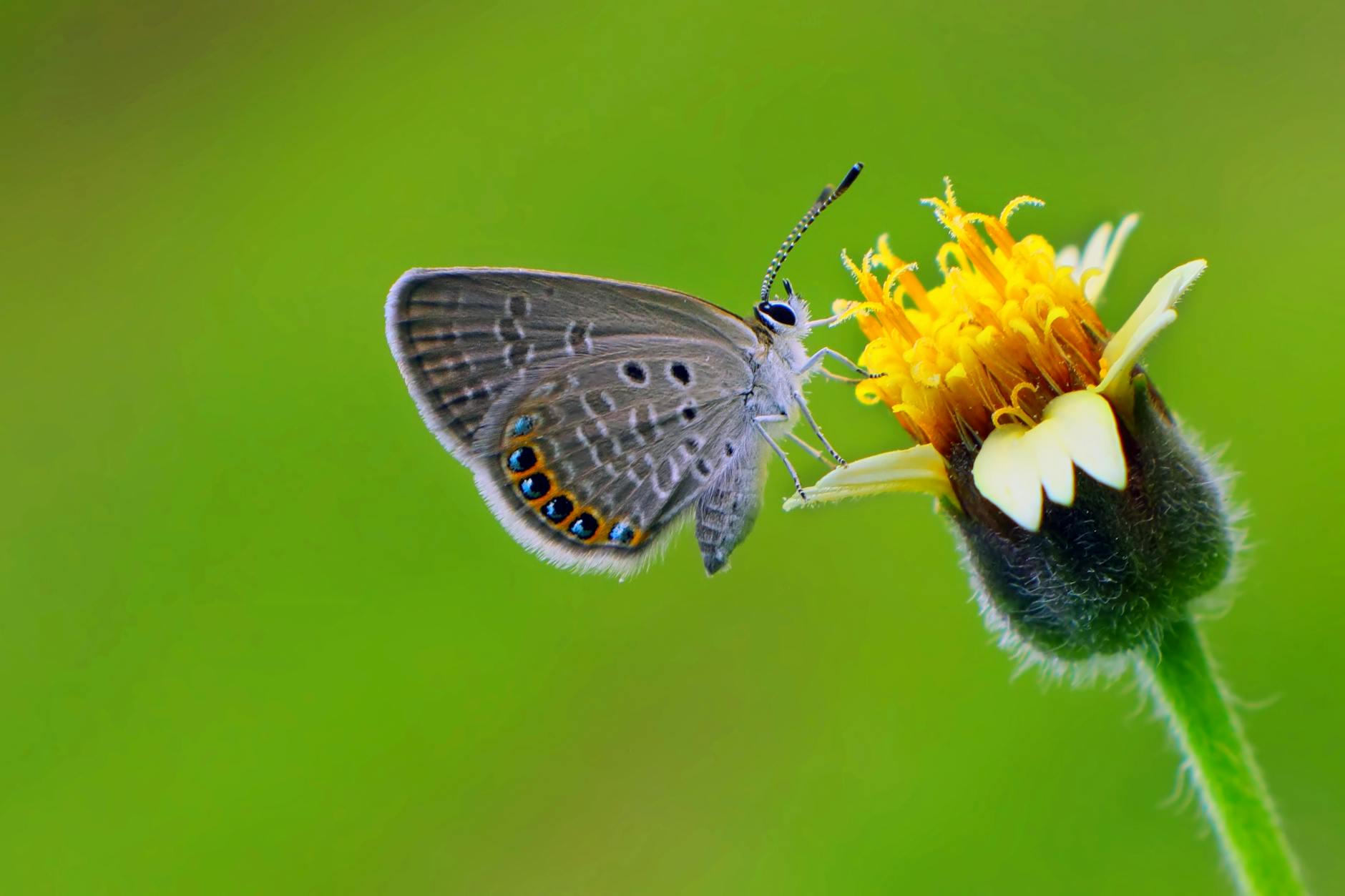Butterflies are among nature’s most enchanting creatures, known for their vibrant wings and graceful flight. Beyond their beauty, butterflies play a vital role in pollination, making them an essential part of the ecosystem. But have you ever wondered how these delicate insects feed? In this hall, we’ll take an in-depth look at the butterfly feeding process, exploring their unique adaptations and diet.

What Are Butterflies?
Butterflies are colorful, winged insects belonging to the order Lepidoptera, which also includes moths. They are known for their vibrant patterns, delicate wings, and graceful flight. Butterflies undergo a complete metamorphosis, developing through four life stages: egg, larva (caterpillar), pupa (chrysalis), and adult. As pollinators, butterflies play a vital role in many ecosystems by helping plants reproduce. In addition to their ecological importance, they are often studied for their unique anatomy and fascinating behaviors, including their specialized feeding process.
Anatomy of a Butterfly’s Feeding Apparatus
To understand how butterflies feed, we first need to examine their anatomy. Unlike many insects, butterflies do not have chewing mouthparts. Instead, they possess a specialized feeding organ called the proboscis, a long, coiled tube that works like a straw. This ingenious adaptation allows them to sip nectar and other liquid sustenance.The proboscis remains coiled under the butterfly’s head when not in use. When feeding, the butterfly uncoils the proboscis and inserts it into a flower to access its nectar. This process is supported by sensory organs on the proboscis that help the butterfly locate food sources.
What Do Butterflies Eat?
Butterflies primarily feed on nectar, a sugary liquid produced by flowers. However, their diet can be surprisingly diverse. Here are some of the key food sources for butterflies:
- Nectar: The primary source of energy, nectar provides the carbohydrates needed for flight and other activities.
- Rotting Fruit: Overripe or decaying fruit is a rich source of sugar and other nutrients.
- Tree Sap: Some butterflies feed on sap, particularly when nectar is scarce.
- Animal Waste: Certain species derive minerals and salts from bird droppings and other animal waste.
- Puddling: Male butterflies often gather at mud puddles to consume minerals and salts, which are essential for reproduction.
The butterfly Feeding Process: Step by Step
1. Locating Food
Butterflies rely on their keen sense of vision and smell to locate food sources. They are particularly attracted to brightly colored flowers in shades of red, orange, yellow, pink, and purple. Flowers with a sweet fragrance or those that produce ample nectar are especially appealing.
2. Landing
Once a butterfly identifies a suitable flower, it lands delicately on the petals. Its legs, equipped with tiny sensory hairs, help confirm the presence of nectar.
3. Uncoiling the Proboscis
The butterfly then uncoils its proboscis and inserts it into the flower’s nectar tube. This process requires precision, as the proboscis must reach the flower’s nectar reservoirs.
4. Sipping Nectar
Using capillary action, the butterfly draws the nectar up through its proboscis. The liquid is then transported to the butterfly’s digestive system, providing it with the energy it needs.
5. Moving On
Once it has consumed enough nectar, the butterfly moves on to the next flower, continuing the cycle and inadvertently assisting with pollination by transferring pollen from one bloom to another.
The Role of Butterflies in Pollination
While feeding, butterflies often brush against the reproductive parts of flowers, transferring pollen between them. This process, known as pollination, is crucial for the reproduction of many plants. Although butterflies are not as efficient as bees in pollination, their ability to travel long distances makes them excellent pollinators for a wide variety of plants.
Challenges Faced by Butterflies While Feeding
Despite their elegance, butterflies face several challenges when it comes to feeding:
- Habitat Loss: Urbanization and deforestation have reduced the availability of nectar-rich plants.
- Pesticides: Chemicals used in agriculture can harm butterflies and their food sources.
- Climate Change: Shifts in climate affect the availability of flowers and alter migration patterns.
How You Can Help Butterflies Thrive
You can support butterflies by creating a butterfly-friendly environment in your garden. Here are some tips:
- Plant Native Flowers: Choose a variety of nectar-rich plants that bloom throughout the year.
- Provide Water: A shallow dish with water or a mud puddle can help butterflies stay hydrated and gather essential minerals.
- Avoid Pesticides: Use natural pest control methods to protect butterflies and their habitats.
- Grow Host Plants: Caterpillars, the larval stage of butterflies, need specific host plants to grow and develop. Research the needs of local butterfly species and plant accordingly.
Conclusion on butterfly Feeding Process
Butterflies are not only beautiful but also play an essential role in maintaining ecological balance. Their unique feeding process is a marvel of adaptation, enabling them to extract nectar and contribute to pollination. By understanding the butterfly feeding process and creating a supportive environment, we can ensure that these delicate creatures continue to grace our world for generations to come.
Let’s cherish and protect the butterflies—nature’s delicate pollinators.
